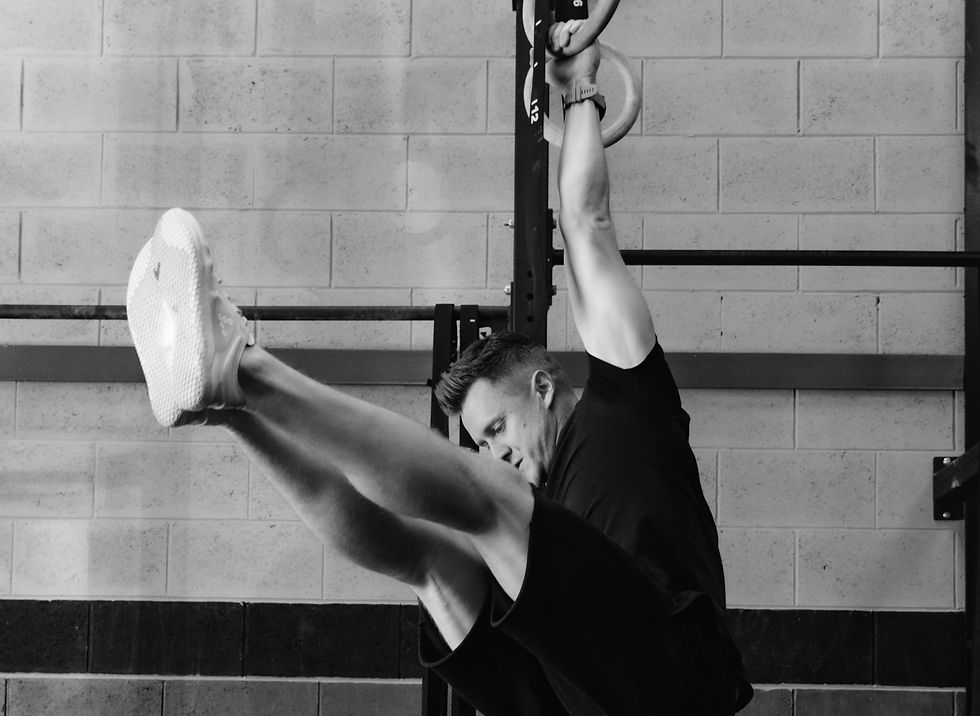Become the master of your own destiny
- Tim Stevenson

- Jun 16, 2022
- 4 min read

In my previous blog I spoke about the role of ‘expression’ in the training programme design process.
To recap:
‘Our expression and interpretation of any kind of movement practice will often reflect something of our training values. Values are important so we should therefore allow them to determine our intention and movement execution come workout time.’
The takeaway considerations here are
1. How do you want to move?
2. In what environment do you want to train/spend your time?
The intention behind these blogs is to highlight some of the elements that many people don’t consider when thinking about a training programme. We often just get what we’re given but I believe that people who are enthusiastic about their training should be more invested in the process than purely participating as passenger.
Ask Why
So to be an active player in the programming process we need to ask a simple question;
Why is that exercise on the programme?
Now I get it that a lot of people outsource their training programme design in the form of a personal coach, group exercise class, or online programme because they don’t want to think about these things. That is what you’re paying someone else to do.
I get it. But the downside is that the fitness and training industry is the wild west and there are a lot of cowboys and girls out there.
For me, programme real estate is valuable and as such each exercise I choose needs to earn its place. I specialise in individualised training and solving complex movement problems. So, therefore, the programme needs to have sniper like efficiency and a tight thought process to back it up.
The Wild West
If you’re working with someone on a one-to-one basis and they cannot give you a well thought out rationale as to why every single exercise is on the programme and how that relates to your individual movement needs and specific goals, I’d question how skilled at programme design they really are.
I’ve said before that any dumbass can put a load of exercises on a programme and write some reps and sets next to them. It takes a higher level of skill and ability to create specific long-term adaptation.
But what about the group environment. This is more difficult to pinpoint because the programme needs to meet the needs of everyone. It is so easy to be a passenger in this scenario, however, the best thing you can do is take more personal ownership.
This is where expression enters the fray. As I said in the last blog, you need to decide how you want move.
If you’re in a group training setting, the coach leading that session, the workout itself and the culture that comes with the type of exercise is all part and parcel of the environment you enter into. Here you can only control certain elements.
I see a lot of programmes out there that are all gas and no brakes. People get sucked in and pulled into moving poorly as quantity dominates quality. The question to ask is, is this what you want?

Become The Coach
If you consistently perform poor quality repetitions, you are teaching your brain that this is how you want to move. Unfortunately, your brain will happily oblige.
Don’t believe me? Spend all day sitting and see how good your body gets at it.
Your body will adapt to the stress you place upon it… whatever that stress is. Moving well or moving poorly in a training context are both forms of stress. The outcomes however vary significantly.
For me this is a primary role of the coach. To deliver an appropriate stimulus and optimise the potential for a specific physical adaptation.
Only not all coaches do that.
Ownership
If you are outsourcing your training programme design do not think that you can’t still take ownership of certain elements of it.
Here are three actionable takeaway points that will improve your results from any training programme:
Don’t be afraid to ask why. Whether you verbalise this weekly in your group training class is up to you but at least ask yourself. In a one-to-one context this should be a central part of the coaching process. If a coach can’t tell you why, think about whether he or she is the right person to entrust with your training.
Become a student of training. The more you know and understand the better decisions you can make when outsourcing your training programme design.
Don’t let fitness and training be done to you. Regardless of what is on the training programme, the environment and the culture, remember that you can choose how you move.
If the level of intensity is above your capacity/ability whilst continuing to deliver high quality movement, change the training programme or adapt the workout.
They say it takes broadly 1000 repetitions to learn a new movement and 5000 to change an existing one.
It makes sense to move well from the beginning.
So when it comes to your training programme; ask questions, control the controllables and be the master of your own destiny.



Comments